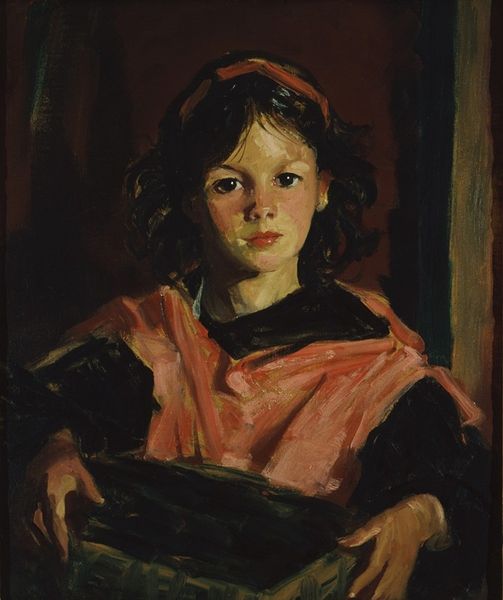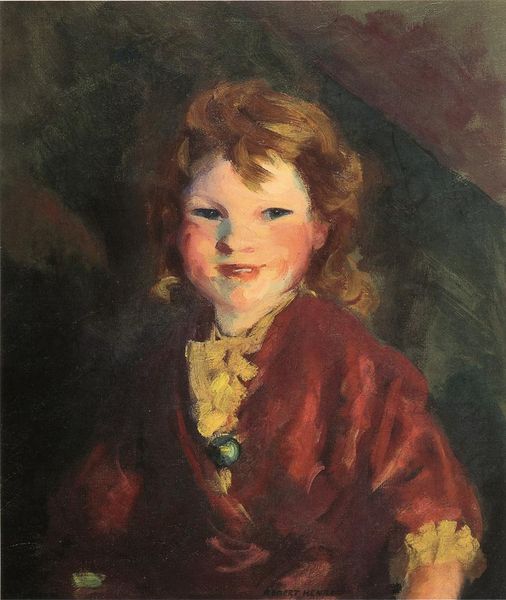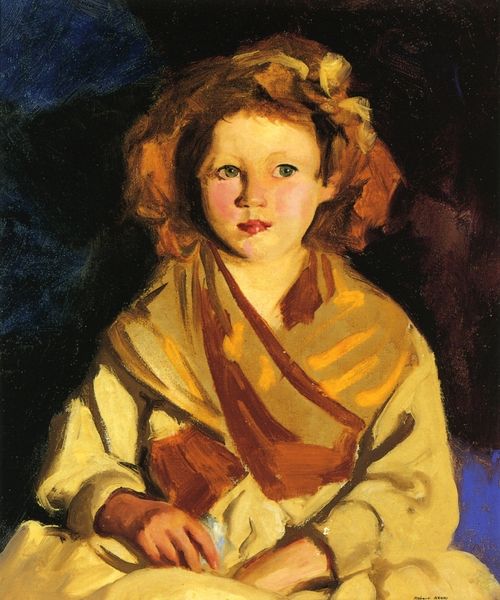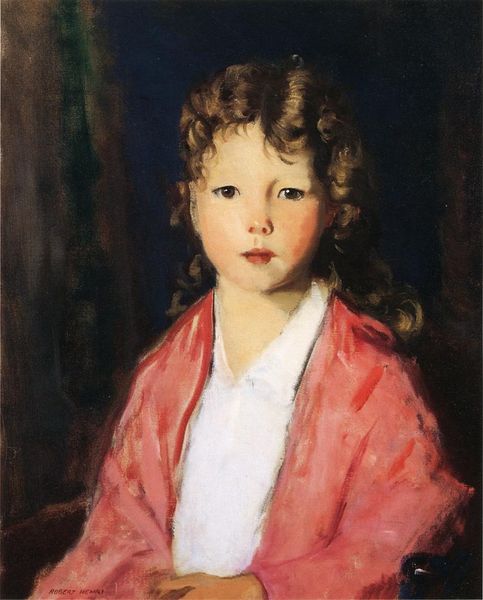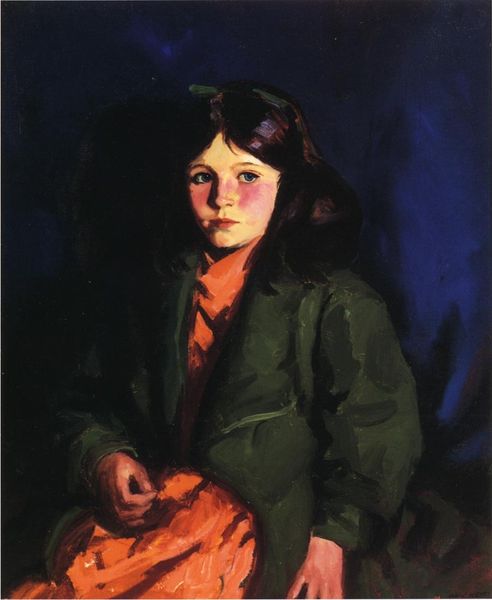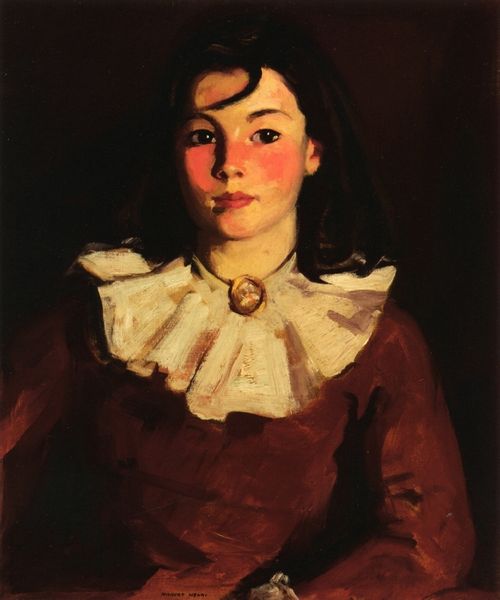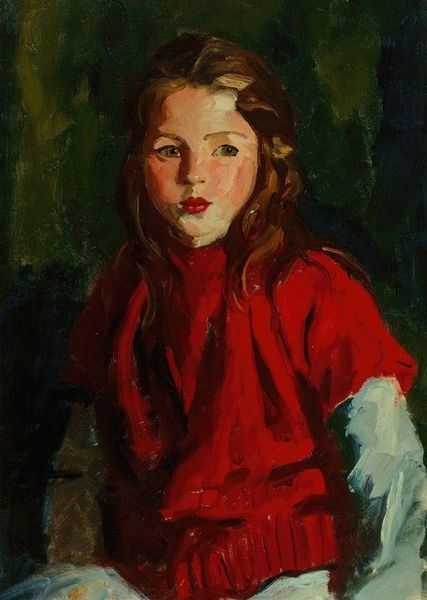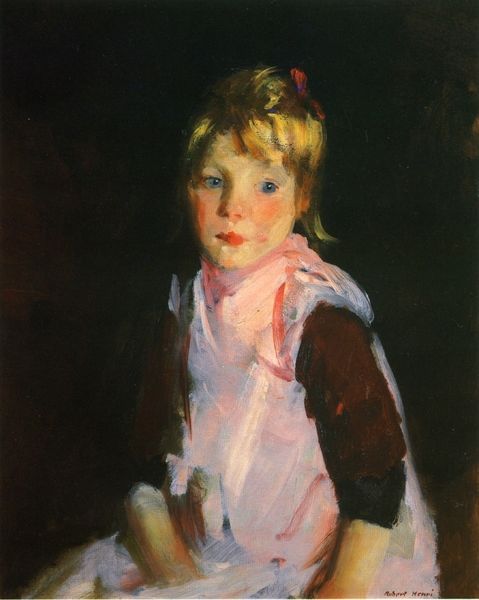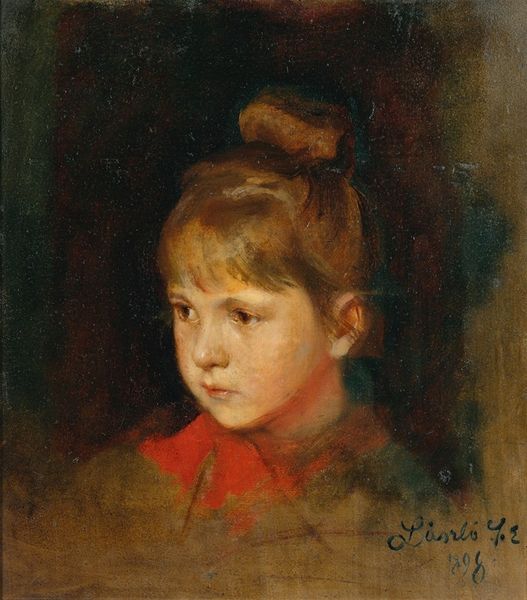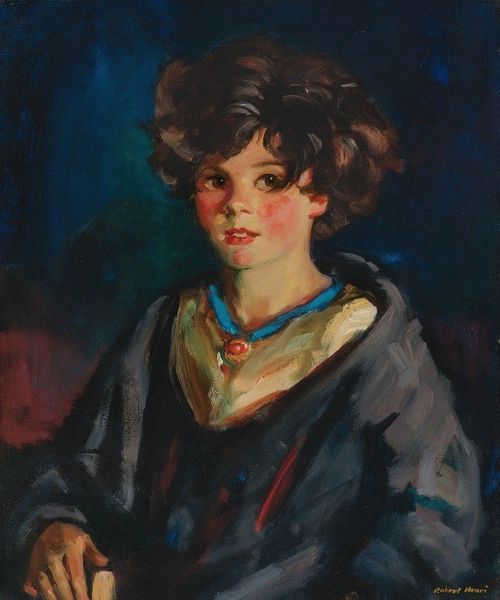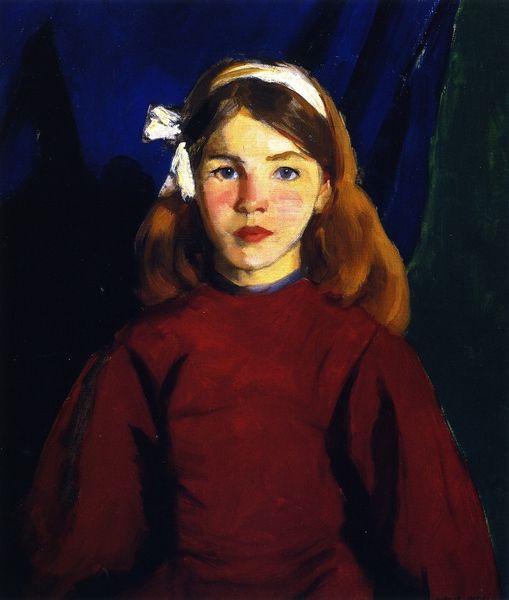
painting, oil-paint
#
portrait
#
figurative
#
painting
#
oil-paint
#
oil painting
#
ashcan-school
#
painting painterly
#
animal drawing portrait
#
facial portrait
#
portrait art
#
fine art portrait
#
realism
Copyright: Public Domain: Artvee
Curator: Here we have Robert Henri's "Irish Girl," an oil painting completed in 1928. Editor: She looks… determined. There’s a directness to her gaze, and her rosy cheeks suggest an almost defiant health. It’s not the sentimentalized view of childhood you often see. Curator: Precisely. Henri was a leading figure in the Ashcan School, which challenged the art establishment by depicting everyday life, often focusing on the working class. He aimed to capture the spirit of the individual, regardless of their social standing. Editor: It’s fascinating how this commitment plays out in this portrait. While the painting does nod to conventional portraiture with its focus on a single figure and direct eye contact, the expressive brushwork disrupts any sense of formality. The loose, visible strokes feel radical. It pushes against the polished representations often linked to notions of feminine virtue. Curator: Yes, the sitter is portrayed in a raw, almost unfinished style. Her direct gaze perhaps challenges viewers to acknowledge the often-overlooked realities of urban life, offering dignity and visibility where there was neglect. Editor: The title itself, “Irish Girl,” raises questions of representation. In the early 20th century, Irish immigrants faced widespread discrimination. Was Henri’s choice of subject a conscious act of solidarity? And to what extent is her "Irishness" being performed? It looks to me that it relies on a flattening ethnic generalization as “other." Curator: These are essential considerations. The Ashcan School engaged with questions of immigration and social mobility, but did they fall into familiar tropes while depicting marginalized communities? It prompts critical evaluation of Henri’s motivations and the work’s potential to either challenge or reinforce stereotypes. Editor: And how much agency did this young sitter actually have? How did she see herself represented by the artist? It compels us to investigate the ethics of portraiture. Curator: This conversation underscores the complexities embedded within what seems like a simple portrait. We are left questioning both the artist’s intentions and the painting's ongoing role within larger conversations about identity, representation, and social justice. Editor: It shows us how something created in the past might hold ongoing and difficult meanings for the present, and how looking closer with an open mind can reveal these dynamics to us.
Comments
No comments
Be the first to comment and join the conversation on the ultimate creative platform.
